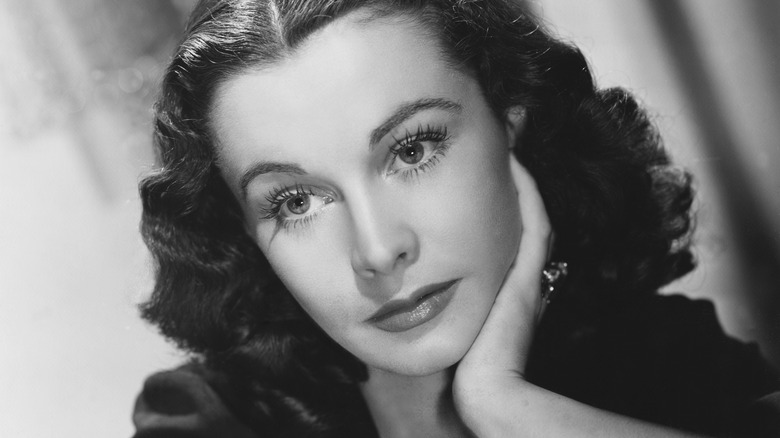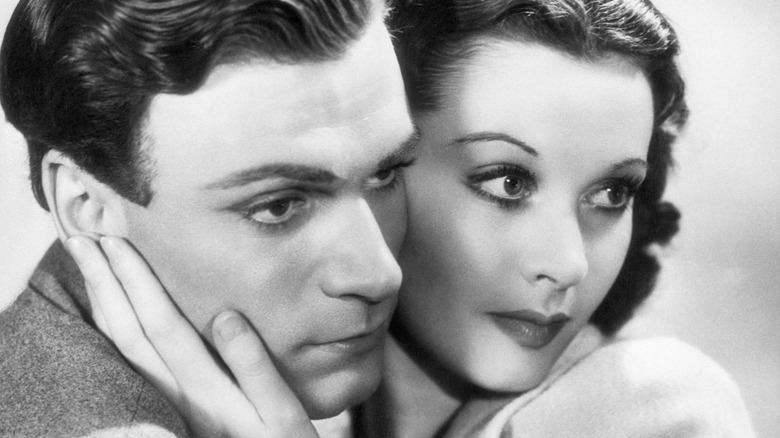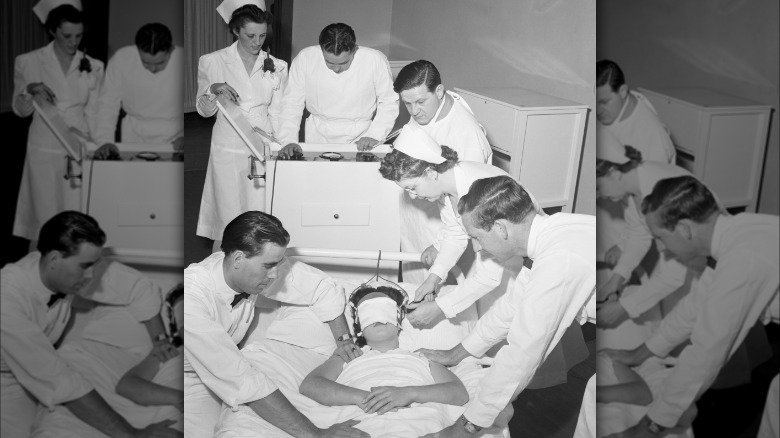Vivien Leigh Was Labeled Difficult By Hollywood For Tragic Reasons
The label "difficult to work with" can sometimes signal the end of a Hollywood actor's career. This was true in classic Hollywood as much as it is now. If the talent is there, the roles may still keep coming, though, at least for a while, as was the case with Academy Award-winning actress Vivien Leigh, star of the 1939 classic movie "Gone with the Wind." During that film's production, Leigh nearly overdosed on sedatives while she displayed "manic" on-set behavior.
Similar issues for the movie star began in childhood, according to Leigh biographer Alan Strachan, author of "Dark Star: A Vivien Leigh Biography" (via Fox News). Leigh's acting career was first affected by these types of problems while filming "A Yank in Oxford" in 1938, per Harper's Bazaar. Around that same time, Leigh's high-profile affair with actor Laurence Olivier sparked; Leigh and Olivier later married.
After "Oxford," Leigh tried to manage her symptoms with sedatives, which might have killed her, per the New York Post. In retrospect, Leigh's on-set behaviors and troubled private life seem less the choice of a willful artist or a temperamental movie star. Instead, Leigh's reputation in Hollywood as "difficult to work with" stemmed from personal tragedy and a mental health issue — bipolar disorder — which was much less well understood in her time, with far fewer treatment options available than today.
Leigh displayed bipolar behavior in childhood
As Healthline writes, notions of what's now called bipolar disorder — or periods of extreme high punctuated by deep depression — were recorded in the time of Ancient Greece. In the 1850s, though, French psychiatrist Jean-Pierre Falret first defined what we now typically think of as the condition. According to Leigh biographer Alan Strachan, behaviors consistent with bipolar disorder were reported by actress Vivien Leigh's schoolmates.
Speaking with Fox News, Strachan said, "Even at school, some of her schoolmates did notice periods when she would withdraw, almost inside herself, and occasionally be almost hysterical for a brief period. Then she would relax and become absolutely normal again and her usual cheery self." Mental health was even more stigmatized in Leigh's time than it is now, and bipolar disorder had no formal diagnosis until 1980 (via WebMD). Over time, Leigh's condition worsened, as did her professional reputation.
Still, she was reluctant to see a psychiatrist, Strachan said. Eventually, she did, "but it led nowhere," he added. "Vivien was terrified of the publicity that might possibly be shaken out by that. She was near hysterical at the thought of having anything about her nervous condition appearing in the newspapers. It was considered something of a stigma at that time." Bipolar disorder is now commonly treated with medications and therapy.
Leigh underwent electroshock therapy
In addition to Vivien Leigh's known mental health challenges, she had a number of miscarriages in her life, which may have exacerbated her mental health further. Leigh biographer Alan Strachan said (via Fox News) says she had at least two, but his research concludes there were possibly three — the first of which came in 1944, four years after she married Laurence Olivier (the couple would divorce in 1960). In 1944 she also contracted tuberculosis, per Harper's Bazaar, and often turned to alcohol to alleviate her various mental and physical symptoms. The next known miscarriage happened in 1953 when her bipolar symptoms worsened.
By 1954, Leigh's personal life and professional reputation reached a low point. "She slipped into her worst manic spell to date, absolutely impossible to remember her lines while filming "Elephant Walk." "She kept slipping into past characters," Strachan said. Elizabeth Taylor eventually took over the role. Around this same time, Leigh was treated with electroshock therapy. Today, what's called electroconvulsive therapy has been proven an effective treatment option for some mental health challenges when administered carefully with modern technology (per Mayo Clinic).
In Leigh's time, though, electroshock therapy (similar to what's pictured above) was far more dangerous and much less effective. By the 1950s, Leigh's condition had declined to such an extent electroshock therapy was the only option left for her. "That must have been absolutely horrific for her," Strachan said. A recurrence of TB would contribute to Leigh's premature death in 1967, at the age of 53.
If you or someone you know needs help with mental health, please contact the Crisis Text Line by texting HOME to 741741, call the National Alliance on Mental Illness helpline at 1-800-950-NAMI (6264), or visit the National Institute of Mental Health website.


